El sensor Scosche RHYTHM+ no es un producto nuevo ni representa una novedad en la categoría. De hecho son ya dos años los que lleva en el mercado, tiempo más que suficiente para que la medición óptica se haya ido introduciendo más y más entre nosotros, incluso directamente en los propios relojes.
Entonces, ¿por qué estoy analizándolo ahora?. Pues porque hasta este momento no estaba disponible de forma directa en España. Pero si ya estaba el Mio Link entre nosotros, que funciona muy bien y es también compatible con dispositivos ANT+ y Bluetooth, ¿por qué me molesto en analizar esta otra opción?. ¿Es mejor que Mio Link?. Pues no es mejor ni peor, es igual… pero diferente, como irás descubriendo a lo largo del artículo. Y evidentemente por conocer de primera mano otro sensor diferente, fabricado en este caso por Valencell.
Este Scosche RHYTHM+ no ha sido cedido por el fabricante, sino que lo he comprado yo directamente en Amazon para poder ofrecerte la prueba completa. Así que como siempre te recuerdo, si quieres colaborar con la página y ayudar a que siga habiendo nuevas pruebas de productos, compra tu Scosche a través de los enlaces que facilito (no hace falta que sea el Scosche RHYTHM+, puedes comprarte también un tostador o unos calcetines, lo que te haga falta). A ti no te supondrá ningún coste, pero retornarás una pequeña cantidad que es lo que soporta tanto la página como el trabajo que en ella realizo.
Y sin más dilación, vamos a desgranar este sensor óptico. ¿Es mejor o peor que el Mio Link?. Pues en un rato lo sabrás.
Navegar a secciones específicas
Desempaquetado
Scosche RHYTHM+ es un dispositivo muy sencillo, simplemente es un sensor de pulso y no va más allá de enviar datos de frecuencia cardíaca a otro dispositivo. Por tanto dentro de la caja no encontrarás muchas cosas.
En la «ventana» de la caja se puede ver el sensor con una correa. Aparte podrás encontrar una correa adicional (más larga que la que viene ya colocada en el sensor), el cable de carga y el manual de instrucciones que, como siempre te digo, puedes obviar totalmente (para eso estás leyendo esto).
Aquí puedes ver las dos correas. Ambas son exactamente iguales en cuanto a tipo de material y cierre, la diferencia entre ambas es la longitud. Por tanto la pequeña puedes usarla para ponerlo en la muñeca y la grande para la parte superior del brazo o, realmente, donde a ti más te apetezca. Sí, también puedes medirte el pulso AHÍ, si es en lo que estabas pensando…
El sensor en sí mismo es un cuadrado de plástico e incluye dos pasadores donde fijar la correa. Cuidado con los golpes, porque está realizado en plástico y si partes alguno de los dos soportes, la siguiente opción para fijarlo es con cinta aislante.
El sensor se enciende simplemente presionando la S de la parte superior. Hay un LED de control que indicará si ha encontrado pulso, si está encendido, etc. Y con una aplicación (que sólo está disponible en iOS) también es posible seleccionar una zona de trabajo. Si parpadea en color morado estás en zona. En color azul por debajo de la zona y en color rojo si estás por encima.
La parte trasera es como mirar un frigorífico por detrás. Es feo, pero es lo que hace que funcione. Rodeando el sensor hay tres LEDs. Dos iluminan en color verde, y el central (de tamaño más rectangular) es de color amarillo, en teoría para mejorar la lectura en los tipos de piel más oscura. Encima de el conjunto de luces y sensor verás dos círculos metálicos, simplemente es donde se coloca el conector de carga.
En el cuerpo del sensor también indica que es resistente al agua, según características facilitadas por Scosche la resistencia es IP67. Por tanto, resistente a la inmersión a 1m de profundidad durante 30 minutos, aunque en realidad es capaz de aguantar más. Pero frente a Mio Link puede presentar un problema, ya que ésta última tiene certificación de 30m. Cierto es que ninguno de los dos sensores aporta datos fiables en natación, pero si piensas en éste sensor para realizar un triatlón es un detalle a tener en cuenta.
Ha sido rápido, ¿verdad?. Pues lo siguiente es saber con qué dispositivos es compatible.
Dispositivos compatibles
Es posible conectar Scosche RHYTHM+ a dispositivos que dispongan de tecnología ANT+ o Bluetooth Smart. Y lo hará de forma simultánea, por lo que puedes tener a la vez conectado el sensor a dispositivos que usen ambos tipos de estándar. Pueden ser dispositivos ANT+ como tu reloj Garmin. O Bluetooth como tu Suunto Ambit3 o Polar M400. Incluso máquinas de gimnasio si utilizan alguno de estos dos tipos de conexión.
Lo único que debes tener en cuenta es que ANT+ permite multiconexión entre dispositivos. Todos ellos hablan entre sí en relación de igual a igual, por lo que cinco dispositivos pueden conectar a un mismo sensor.
Bluetooth, en cambio, no funciona igual; sino que tiene una relación de maestro-esclavo. Un accesorio esclavo (en este caso el sensor de Scosche) sólo puede estar conectado a un dispositivo maestro, pero no a varios maestros. Sin embargo, ese maestro (en este caso sería el reloj) sí podrá conectar con varios accesorios esclavos (sensor de pulso, sensor de cadencia, sensor de potencia, etc.).
En resumen, el sensor Scosche RHYTHM+ se puede conectar de forma simultánea a cualquier número de dispositivos a través de ANT+ y a un sólo dispositivo a través de Bluetooth.
Hacer la conexión es muy sencillo, simplemente tienes que hacer la búsqueda desde tu reloj. Por ejemplo en el caso de Garmin simplemente deberás ir a las opciones de configuración y hacer una nueva búsqueda de dispositivos.
Por supuesto en otros dispositivos el procedimiento es similar. Como en los Ambit3, donde nuevamente deberás entrar a las opciones de configuración para hacer la búsqueda del sensor.
Por ejemplo, puedes conectar el sensor a un ordenador de ciclismo y a un teléfono móvil (usando ANT+ y Bluetooth, no hay que elegir una opción u otra). O a dos relojes diferentes; uno que sea el que tu llevas y otro que lleve tu entrenador a tu lado. Y como te he indicado anteriormente, Bluetooth y ANT+ de forma simultánea.
Y así se me podrían ocurrir miles de ejemplos.
¿Y esto dónde lo llevo?
El sensor es exactamente igual que cualquier otro sensor de pulso óptico. Lo que hace un par de años merecía explicación en su funcionamiento, hoy en día ya es algo prácticamente conocido por todos. Un sensor que interpreta cambios en la absorción de la luz; unos LED de color verde iluminan los capilares, que junto con los algoritmos propios de cada fabricante -la parte más importante- permite realizar la lectura de la frecuencia cardíaca. En el caso de Scosche RHYTHM+ esos LED verdes se ayudan de otro LED de color amarillo que, en teoría, sirve para mejorar la lectura en distintos tipos de piel.
Si quieres conocer este tipo de medición con mayor detalle puedes echar un vistazo a lo que publiqué hace casi un año al respecto, donde hablo de la tecnología con más detenimiento.
La principal ventaja que tiene Scosche RHYTHM+ es que puedes llevarlo en multitud de ubicaciones. En el brazo, en el antebrazo, en la muñeca… Dependiendo del deporte que estés practicando, incluso en la pierna como si fuese el chip de un triatlón (pero no para carrera, al llevarlo en ese lugar provoca demasiado impacto y lecturas incorrectas).
Lo que para mi puede ser un lugar cómodo donde llevar el sensor, para ti puede no ser la opción ideal, y viceversa. Lo podrás llevar donde más cómodo te resulte a lo largo de todo el brazo.
El sistema de sujeción de Scosche (una simple cinta de tela con velcro) permite llevar el sensor de pulso en casi cualquier parte del cuerpo, abre totalmente el abanico a las opciones de llevar el sensor como más te apetezca.
Comparando RHYTHM+ con otros sensores
Como es lógico, lo que más importa del Scosche RHYTHM+ es la fiabilidad de los datos. De nada sirve que sea muy cómodo o que lo puedas usar en varios lugares del cuerpo si luego los datos obtenidos no nos sirven para nada.
Y no hay nada mejor para comprobar la fiabilidad de lectura que enfrentar al sensor de Scosche con otros sensores; tanto ópticos para ver cómo se sitúa con respecto a ellos, como con sensores de pecho tradicionales, que será el que nos dé el punto de referencia con el que poder hacer la comparativa.
Para empezar esta batería de pruebas, un entrenamiento corto de 20 minutos a ritmo fácil y constante. Es decir, una prueba tremendamente sencilla para cualquier sensor, tanto de pecho como un sensor óptico. Recuerda que si pinchas en la imagen podrás verla a mayor tamaño.
En el siguiente entrenamiento los tres sensores se alinean perfectamente (segundo arriba, segundo abajo). Sólo hay discrepancias al inicio de la actividad, pero es algo común a todos los sensores, independientemente de su tecnología (el frío puede dar lecturas erróneas tanto en los sensores de pecho como en los sensores ópticos).
Como es habitual, correr a ritmo constante no presenta ningún tipo de problema para los sensores ópticos. Es la actividad donde mejor se desenvuelven, así que no supone ningún tipo de sorpresa un comportamiento tan bueno por parte del Scosche.
Donde es más habitual encontrar diferencias de comportamiento es en los entrenamientos de series, causados por los cambios bruscos de ritmo, las subidas y bajadas rápidas de pulsaciones y la cadencia más alta, que puede provocar que el sensor se fije con las «pulsaciones» de la cadencia en lugar de las pulsaciones del corazón, lo que se denomina «bloqueo de cadencia» o «cadence lock».
En el caso del sensor de Scosche, no presenta ningún problema. Este es un entrenamiento corto con sólo dos intervalos de un kilómetro a ritmos sub 4:00. Estoy en plena recuperación de problemas de gemelo y soleo, así que de momento este tipo de sesiones están «limitadas» por lo que no he podido realizar entrenamientos de series de mayor duración.
El resultado es perfecto, coincidiendo en todo momento con las lecturas del sensor de pulso en el pecho. El sensor del Garmin Vivoactive HR sufre de cierto retraso en los momentos de recuperación tras las series, pero es algo que no acusa el Scosche RHYTHM+.
El siguiente ejemplo es similar en concepto al anterior, un entrenamiento ligeramente progresivo terminando en aceleración cuesta arriba.
Todas las pruebas realizadas a ritmos constantes dejan al sensor de Scosche en buen lugar. Consultando los datos mientras corro en los tres relojes siempre podía observar que en todo momento los tres sensores coinciden plenamente.
En el que ves a continuación, además de correr, al final del mismo tenía 20 sentadillas y terminar con sprint cortos de 50 metros a máxima intensidad. La parte inicial hasta las sentadillas verás que los tres sensores coinciden de forma absoluta, pero al llegar al tramo final vemos discrepancias.
Así que amplío ese fragmento para verlo con más detalle, pues con tanta curva de color es difícil de apreciar qué ha grabado cada uno de ellos.

A continuación te hablaré del ciclismo, algo que a algunos sensores se les suele atragantar bastante, sobre todo a los nuevos sensores integrados de Garmin y TomTom (como puedes comprobar en las pruebas del Forerunner 235 y TomTom Runner 2). En la bici, debido a los movimientos de muñeca y a la falta del movimiento típico de la carrera (el sensor usa un algoritmo para eliminar el ruido producido por ese movimiento), producen unas lecturas bastante erróneas.
Aquí hay diferentes secciones que quiero destacar por separado. En primer lugar, te muestro la actividad al completo donde puedes ver dos tramos de ejercicio propiamente dicho y dos tramos donde las pulsaciones caen por estar en reposo.
En primer lugar, puedes comprobar que los tres sensores clavan la gráfica cuando estoy pedaleando. No hay nada que objetar a ninguno de los tres (los ópticos Scosche RHYTHM+ y Mio Link, junto con el sensor de pecho de Garmin).
Pero cuando estoy en reposo… no tanto.
No es nada fácil hacer un sensor que sea capaz de medir correctamente las pulsaciones tanto en reposo como en actividad. Por el momento no hay un sensor óptico perfecto. El de Fitbit tiene buen rendimiento en reposo, pero baja ligeramente la calidad de los datos en ejercicios intensos. Garmin y TomTom tienen buenos resultados tanto en actividad como en reposo, pero fallan estrepitosamente a la hora de obtener datos en ciclismo. Mio y Scosche no tienen problemas con ningún tipo de actividad, pero lo pasan francamente mal cuando tienen que fijar unas pulsaciones en reposo.
Así pues, es cuestión de que elijas lo que más se ajustará a tu uso habitual.
¿Scosche RHYTHM+ o Mio Link?
Llegados a este punto ya tienes muy claro que quieres cambiar tu viejo sensor de pulso con la cinta en el pecho por uno de los nuevos sensores ópticos, pero no quieres prescindir de tu fiable reloj GPS o no dispones del suficiente presupuesto para comprar un nuevo dispositivo con el sensor óptico integrado.
Por lo tanto, la única duda que te queda por despejar es decidir entre Mio Link o Scosche RHYTHM+. Partiendo de que ambos tienen un precio muy similar y que como has visto en las pruebas, los datos de ambos son igual de fiables; sólo quedan unas pequeñas diferencias que serán las que deben hacerte decidir entre uno u otro. Dichas diferencias son las que te detallo a continuación.
- Mio Link tiene mayor resistencia al agua, al menos de forma oficial. Yo he usado ambos sensores para nadar y no he tenido ningún problema con ninguno de los dos. Esto, que podría inclinar la balanza hacia el lado de Mio, realmente no supone mucha diferencia. Los sensores ópticos no están diseñados para tener datos fiables al nadar. Unos días serán mejores que otros, y además debe colocarse a escasos centímetros del reloj que grabe la actividad y que, a día de hoy, sólo puede ser un Suunto Ambit3, Garmin 920xt o Fenix 3 (en el caso de Garmin para natación en exterior, no en piscina).
- Scosche RHYTHM+ tiene un mejor diseño de antena y mayor potencia de emisión. Incluso lo he usado ejerciendo de liebre, colocando el sensor en la persona a la que guiaba en ritmo y llevando yo el reloj para controlar sus pulsaciones. He podido estar separado del sensor a unos 8 metros de distancia y seguir recibiendo señal de forma constante. Esto para Mio Link es impensable, pues incluso llevando el reloj en una muñeca y Mio Link en la contraria puede provocar que haya ligeros cortes en la recepción de datos.
- Scosche RHYTHM+ permite más opciones a la hora de llevarlo en el cuerpo. Si no te convence llevar dos dispositivos en la misma muñeca, el Scosche podrás llevarlo tanto en la muñeca como en muchas otras partes de tu cuerpo, es mucho menos limitado que Mio Link que debes llevarlo en alguna de las dos muñecas por obligación.
- Mio Link ofrece una sujeción mucho más firme. Su sistema de correa es más fiable y asegura que no se vaya a mover en las condiciones más difíciles. El material es clave (tela en el caso de Scosche, goma en el caso de Mio), y con movimientos bruscos (corriendo sprint o series muy intensas) puede ocurrir que con el sudor el Scosche RHYTHM+ se deslice. Nadando tampoco es fácil mantener el sensor de Scosche en su lugar, incluso pudiendo abrirse y caerse de donde lo lleves. Que si bien en la piscina no tendría mucha importancia, en aguas abiertas podría suponer decirle adiós a tu sensor… para siempre. Aunque vuelvo al punto uno, realmente no son sensores pensados para nadar, pero sí me gusta pensar en un posible uso en los tres sectores de un triatlón.
- Ambos tienen un LED de control, pero el de Mio Link ofrece más posibilidades. Además de señalar los valores obvios (encendido, emparejamiento, etc.) el sensor de Scosche indicará por los colores de su LED si estás por encima, por debajo o en una zona marcada, y sólo se puede configurar desde iOS. En cambio Mio Link permite configurar de forma manual o automática de tres a cinco zonas, cada una con un color, pudiendo saber perfectamente en cuál de ellas estás trabajando. Y también tienen aplicación en Android.
- Mio Link es menos aparatoso. No es que el sensor de Scosche sea grande o incómodo, pero sí es cierto que el de Mio es más estrecho.
- Scosche RHYTHM+, en general, suele tardar menos en encontrar el pulso. No es algo matemático, pero sí es cierto que tengo que esperar menos tiempo a que con el sensor de Scosche comience a marcar datos de frecuencia cardíaca, que es casi instantáneo. Mio Link suele demorarse algo más de tiempo y en ocasiones tengo que reubicarlo en el brazo (algo que se debe, creo, al vello).
Mi opinión
El sensor RHYTHM+ de Scosche se comporta perfectamente en cualesquiera que sea la situación o el deporte. Ya sea corriendo, en la bici o simplemente haciendo deporte en el gimnasio, los datos de frecuencia cardíaca obtenidos son totalmente fiables.
Este tipo de sensores ya no es una novedad -muchos relojes los están integrando de forma directa- pero si quieres dar el salto a la medición óptica y no quieres «dejarte la pasta» en un reloj totalmente nuevo, tanto Mio Link como Scosche RHYTHM+ es el camino a seguir. Ambos sensores son incluso más fiables que los que encontramos en los nuevos dispositivos. Al menos los de Garmin, Life Q o Polar; no así los licenciados por Mio o Valencell (como es el caso del Scosche de la prueba), que son igual de fiables en los productos que se venden con ellos como los que integran su tecnología en el propio reloj.
Así pues, ¿Mio Link o Scosche RHYTHM+? No tendría un claro ganador, ambos me gustan bastante aunque quizás el Scosche ofrece más versatilidad por las diferentes opciones que tiene para llevarlo. Si tú tampoco te decides mi recomendación es simple: compra el que esté más barato.
Comprar Scosche RHYTHM+
Desde hace unas semanas ya se puede comprar el Scosche RHYTHM+ en España, a través de Amazon. Antes no se distribuía de forma oficial en nuestro país y había que importarlo de forma paralela. A continuación puedes ver su precio actual en Amazon España.
https://www.amazon.es/dp/B00LA1GW5K&tag=c1mes-21
Recuerda que si haces la compra a través del enlace que puedes ver más arriba estarás ayudando a soportar la página, y todo sin que a ti te suponga coste alguno. De esta manera tú ahorras y a mi me retornan una pequeña comisión que ayudará a la compra de nuevos dispositivos para realizar las siguientes pruebas.
No olvides compartir la prueba en tus redes sociales y con tus amigos, para que ellos también puedan estar informados. Y no dudes en comentar y suscribirte a los comentarios, muchas veces encontrarás respuesta a preguntas que no se han tratado en el texto de la prueba. Puedes usar los comentarios de la prueba como un foro y compartir no sólo tus dudas, sino también tus opiniones del ordenador con el resto de lectores.

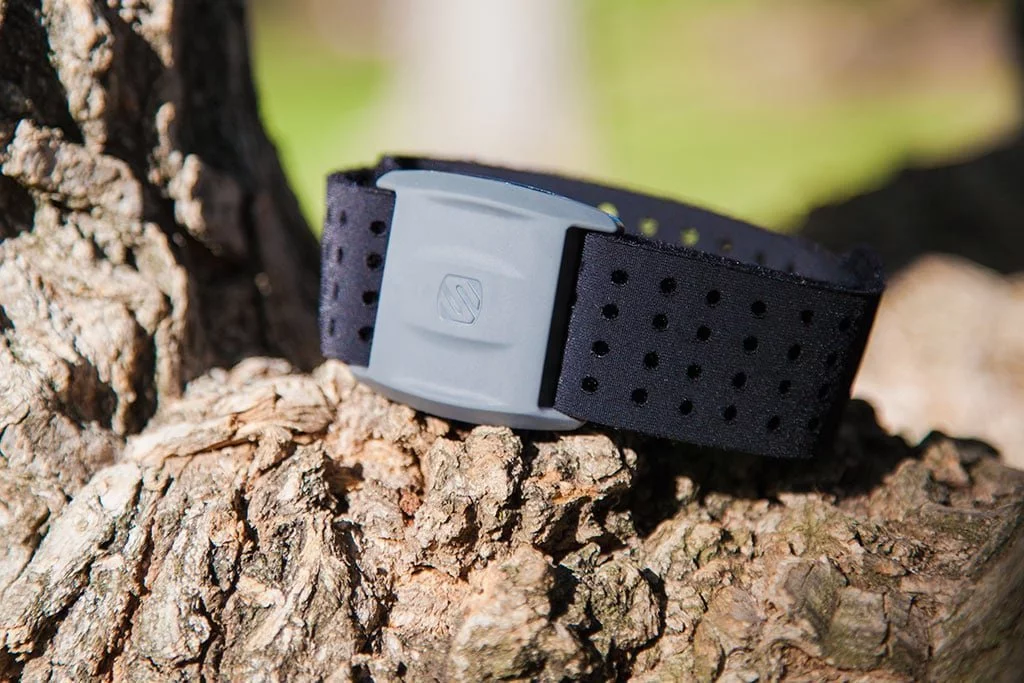
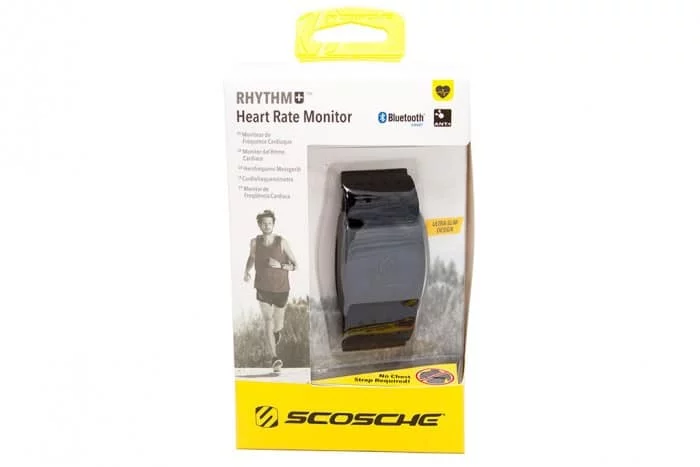
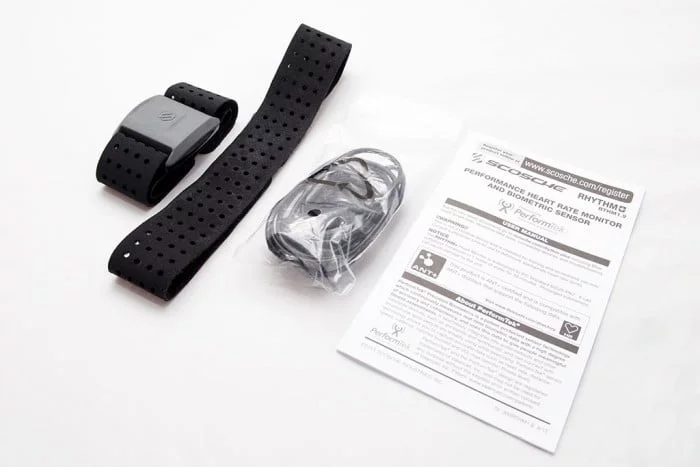
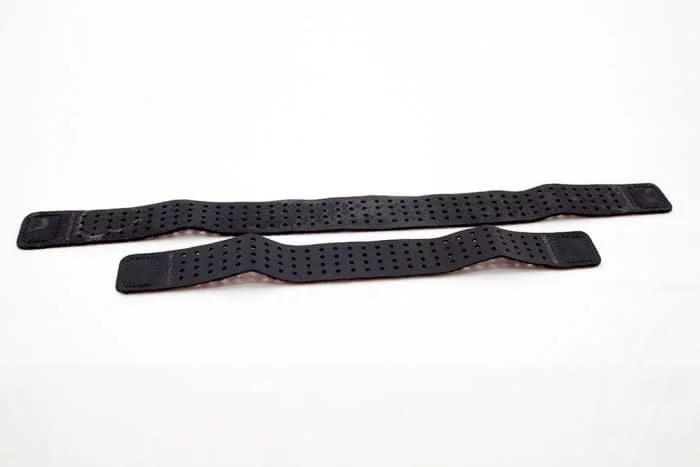
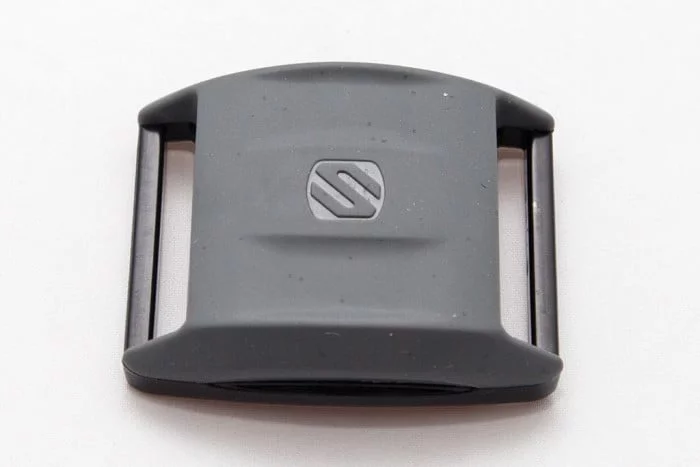
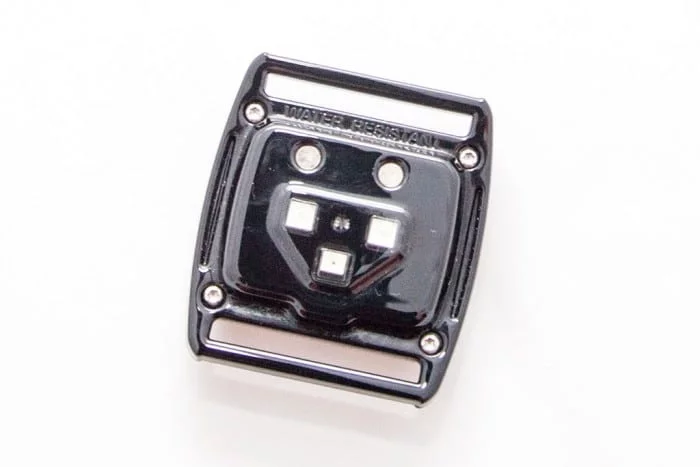




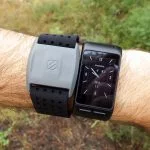
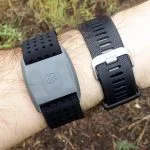
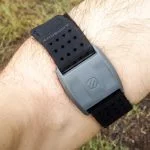
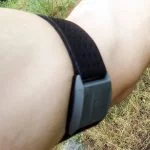
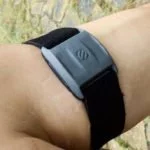

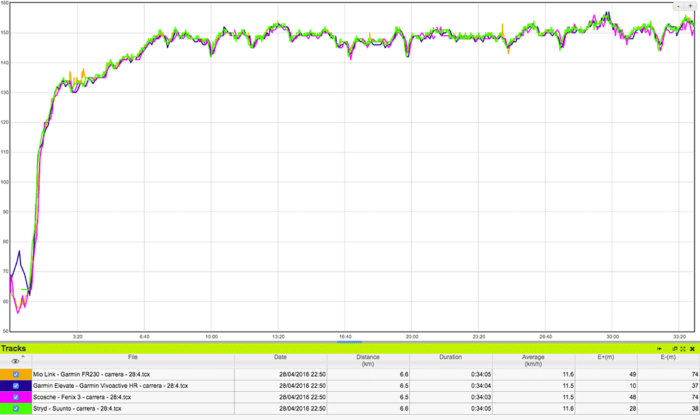
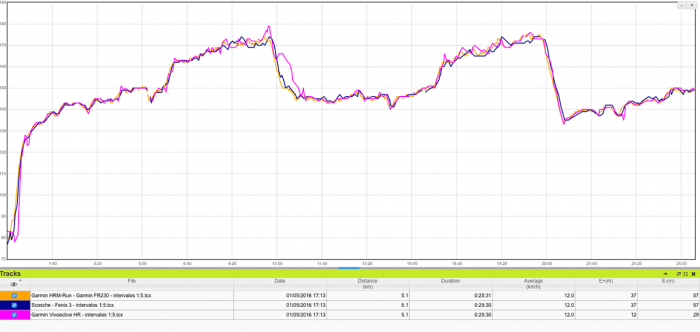

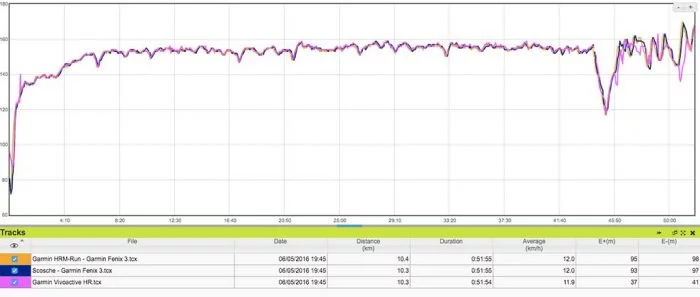

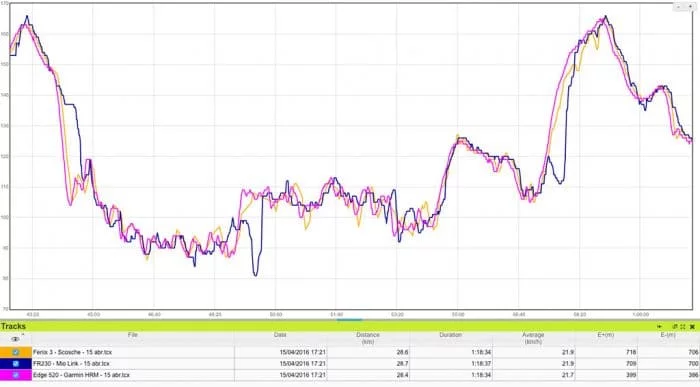
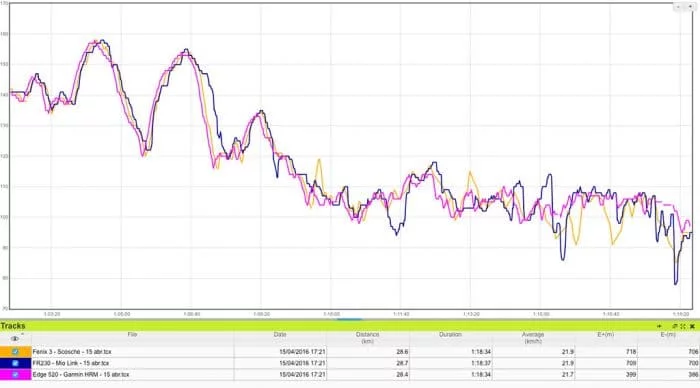
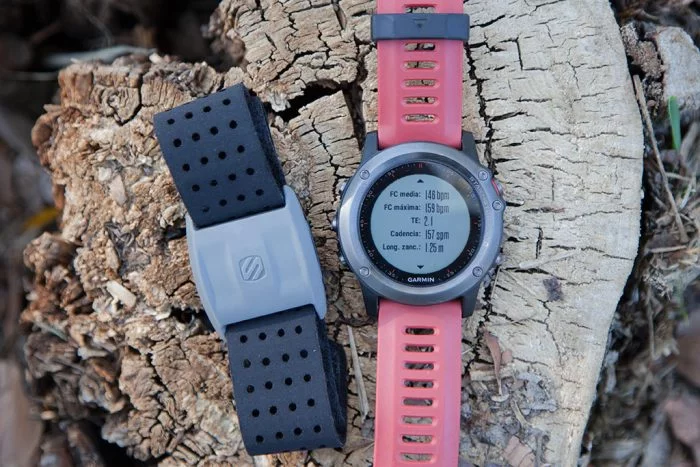
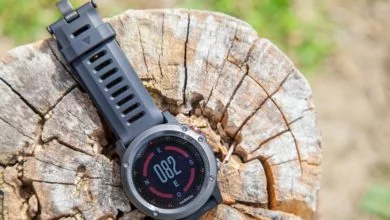
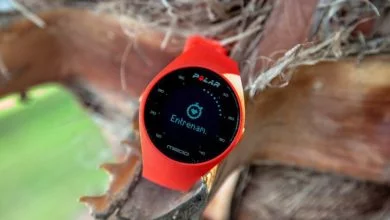
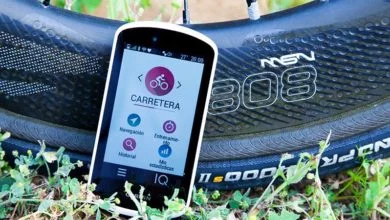
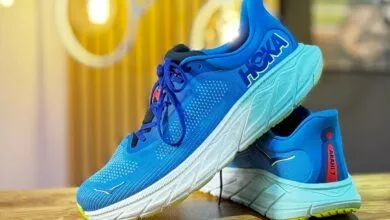
Eduardo, después de leer tu análisis sobre el pulsómetro Scosche, tome la decisión de comprarlo a través de Amazon, y he de decirte que falla más que una escopeta de feria. lo he utilizado en varios de mis entrenamientos comprobando la poca fiabilidad que ofrece. Igual se me dispara a 170 pulsaciones que me baja a 97. En fin, otro gatget que no ofrece lo que predica.
Quizás deberías probar más a fondo aquello que aconsejas.
Un saludo,
José Luis Blanquer
Creo que se me puede acusar de muchas cosas, pero no de publicar pruebas en las que no pruebe las cosas a fondo. Cada análisis que ves publicado lleva SEMANAS de pruebas. No sólo las gráficas que publico, sino el resto de batería de pruebas que realizo. Y el resultado de mis análisis no es lo que diga, es que está reflejado en las gráficas publicadas.
¿Que en tu caso no funciona? Puede ocurrir, por supuesto. Por tu tipo de piel. O tu capilaridad. O no está bien colocado. O, simplemente, te ha tocado una unidad defectuosa (que también puede ocurrir).
¿Pero que no pruebo a fondo lo que aconsejo? En absoluto lo puedo aceptar, porque es totalmente incierto.
Exactamente lo mismo, José Luis. Rara es la salida que no me falla y se baja a 80 pulsaciones, o pierde la señal y tengo que reiniciarlo. Y he probado a ponerlo en todos los sitios posibles. Además, la app, aunque lo reconoce, no me deja hacer la actualización del software (aunque no creo que eso me resuelva mucho)
CORRECCIÓN de mi anterior mensaje: tras actualizar a la nueva versión ha dejado de fallar. Al menos llevo unos doce o trece entrenamientos perfectos, por lo que estoy casi seguro de que era un problema de la versión que traía cargada de fábrica.
Eso sí, tuve que pedir el Iphone a un amigo para actualizarlo, pues desde la versión de la app para Android, o al menos desde mi móvil, no es posible. Desde el Iphone es fácil y rápido.
Hola.
Muy buenos artículos, como siempre. ¿Alguna de las dos sería compatible con un Polar FT80?.
Gracias
No, ese modelo no soporta no ANT+ ni Bluetooth
Gracias.
Consulta, tengo el brasalete Scosche y lo quiero conectar a través de mi celular (BGH JOY SMART A7G); probé varias aplicaciones para ANDROID (ICARDIO, RUNTASTIC, DIFGIT) y si bien el celular me reconoce el Scosche la aplicación no.
Me podrías decir, si sabes, que aplicación puedo usar para mi celular?
saludos
Miguel
Lo siento, pero no conozco ese teléfono
Buenas tardes Eduardo.
Ante todo, muchas gracias por tus completos análisis.
Actualmente controlo mis entrenamientos y carreras de running a traves de un Forerunner 220 y la cinta de pecho tambien de Garmin.
Todo ha empezado por que la banda esta a punto de requerir la sustitución.
Despues de leer la prueba del Scosche RHYTHM+ y la de los Forerunner 230 y 235, me estoy planteando cambiarlo todo y se me generan todas las dudas.
Te explico para que puedas aconsejarme.
Mis sesiones de entreno no los baso, habitualmente, en el ritmo cardiaco, pero si me gusta controlarlo.
Hago tiradas de todo tipo, largas y cortas. Series. Cuestas en montaña….
De estas tres opciones cual me aconsejas:
1) Mantener mi Forerunner 220 con el Scosche RHYTHM+
2) Adquirir el Forerunner 230 con el Scosche RHYTHM+
3) Adquirir el Forerunner 235
Si crees que puede haber alguna otra opción que yo no vea te la agradecere.
Recibe un saludo
De las opciones que propones, la 2 la descarto, porque en ese caso preferiría ir directamente al 235. La única razón por la que elegiría la 2 es si tus series fueran basadas en FC, porque el sensor óptico de Scosche es mejor en este caso (principalmente por su ubicación).
La opción económica es la 1, y todo depende de si estás dispuesto a gastar la cantidad extra o tienes suficiente con el 220.
Si finalmente decides ir al 235, estate atento a este artículo mañana… «creo» que habrá 235 barato 😉
Hola Eduardo.
Muchísimas gracias por tu ayuda.
Saludos P. Pascual
Hola Eduardo.
Al final he optado por la opción 1) Mantener mi Forerunner 220 con el Scosche RHYTHM+, aunque, eso si, de forma obligada dado que el Scosche RHYTHM+ me lo ha regalado mi pareja, supongo que para evitar un gasto mayor. Jajajaja
Todavía no lo he probado, me lo acaban de regalar. Estoy esperando a mañana por la mañana para probarlo. Ya te contaré.
Te quería hacer una pregunta:
El sensor da alguna señal de batería baja?
o hay que ir calculando las 8 horas de autonomía?
También te quería comentar y eso es lo que menos me ha gustado, y es que no lo ha comprado en el enlace que tu facilitabas, para tener esa pequeña aportación económica y poder seguir haciendo estos análisis que tan bien nos van a casi todos.
Como podría hacerlo para que la recibieras aunque fuera de una forma directa por mi.
Recibe un saludo
Sí, cuando el sensor se está quedando sin batería la luz parpadea en color rojo. Sobre la ayuda, no te preocupes, tan fácil como que la próxima vez que hagas una compra en Amazon, te acuerdes de pasar por aquí :-).
Hola Eduardo.
Ante todo muchas gracias.
Hoy he probado el pulsometro y la verdad bastante bien.
He realizado una una tirada de 10 Km y comparándolo con otras similares, controladas con la cinta de pecho Garmin, los datos son muy similares.
Únicamente al iniciar la sesión ha habido una disparada injustificada del ritmo (Ya lo indicabas que esto sucedía en el test que hiciste). No obstante rápidamente se ha situado y ha funcionado correctamente el resto de la sesión.
Me es bastante cómodo de llevar… de momento estoy satisfecho.
ahhh. y lo próximo lo comprare a través de Amazon. Esta vez ha sucedido por que me lo ha regalado mi pareja, como te decía y lo fue a comprar a una tienda física.
Repito muchas gracias y recibe un saludo.
Podrias ampliarme como acceder a la aplicación en iOS y como seleccionar la zona de trabajo, de acuerdo con el siguiente comentarios que haces en el análisis?
«Y con una aplicación (que sólo está disponible en iOS) también es posible seleccionar una zona de trabajo. Si parpadea en color morado estás en zona. En color azul por debajo de la zona y en color rojo si estás por encima.»
La app cambió. Ahora es Fitness Utility que permite actualizar el dispositivo, pero no cambiar las zonas de FC.
Estoy interesado en el sensor Scosche RHYTHM+, para usarlo en mis salidas en bicicleta. Mi idea es usarlo con mi teléfono Android. La pregunta es ¿existen aplicaciones gratuitas que me permitan conectarme al sensor y recoger la actividad en cuanto a pulsaciones y zonas de entrenamiento basadas en pulsaciones? Por lo que he visto, por ejemplo Endomondo y Runtastic lo deben admitir pero en sus versiones de pago.
Hay muchas. Por ejemplo, puedes usar Strava
Hola Eduardo, te hice unas consultas en tu analisis del Vivo Active 3, pero pense que no podía solucionar mi problema hasta leer este artículo. Yo hago varios deportes como correr, ciclismo, pero me he dado cuenta que cuando hago actividades de alta intensidad en cortos intervalos de tiempo, como tenis o squash, el sensor óptico del VA3 no lee las pulsaciones inmediatamente sino que sigue un patrón de lectura de cada 5-8 segundos, es por este motivo que cuando llego a picos altos pero cortos no los detecta, por ejemplo, haciendo un calculo manual de mi pulso en la muñeca a veces llego a niveles de 170 a 180 pulsaciones por minuto en ciertos picos, pero el reloj no marca más de 120, y si espero algunos segundos descansando sube a 150 cuando mi pulso ya se recupero y esta en 120-130, es decir, en pulsaciones arriba de 120 no esta detectando en tiempo real mis pulsaciones y se demora en leer mi pulso exacto.
¿Crees que con este pulsometro de antebrazo me ayude a tener mejor información de mis pulsaciones en estas actividades?
Saludos y gracias,
Ferarana
Otra consulta, ¿podrás darnos un mayor detalle de lo que mencionas «bloqueo de cadencia” o “cadence lock»? Gracias
Ferarana
Habitualmente siempre he tenido mejor resultado con el sensor de Scosche, principalmente por su ubicación. En los próximos meses tiene que llegar un nuevo modelo al mercado: https://www.correrunamaraton.com/nuevo-scosche-rhythm-24-sensor-optico/
Hola Eduardo, te escribo para preguntarte sobre este dispositivo. Te comento, necesito un dispositivo que me sea muy fiable puesto que necesito controlar el pulso cuando realizo una actividad física puesto que tengo problemas con el corazón, he estado leyendo tua recomendaciones sobre sensores de frecuencia cardiaca y recomiendas esté. Pero, quería preguntarte que sí me recomendarias este mismo o algún otro dispositivo más actual puesto que el articulo es de 2016.
Muchas gracias de antemano, espero tu respuesta.
El Scosche continúa siendo una muy buena opción. La otra también puede ser el Polar OH1, aunque sólo es compatible con Bluetooth y depende si el dispositivo con el que vayas a usarlo lo soporta.
¿Dónde puedo encontrar todos los dispositivos compatibles con el Polar OH1?
Gracias.
Básicamente cualquiera que soporte sensores Bluetooth (Polar, Suunto, últimos modelos de Garmin)
Eduardo, el Polar OH1, es compatible con los siguientes modelos:
Amazfit Stratos, Suunto 3, Garmin Forerunner 235.
Los tres poseen Bluethoot. A la hora de elegir el reloj, solo debo fijarme en que tenga esta caracteristica?
Gracias.
El FR235 sólo es compatible con Bluetooth para conexión de datos. En cuanto a sensores sólo soporta ANT+
Hola, Eduardo. Gracias a tus análisis compré hace un par de años un Forerunner 235 hace un par de años. Estoy encantado con el reloj, pero por problemas en un pie, he tenido que dejar de correr, al menos durante un tiempo. Ahora me he pasado a la bici y claro, tal y como tú has indicado en tus análisis, la lectura de pulso es siendo muy generoso, errática. Como la cinta para el pecho no me resulta cómoda, estoy pensando en comprar un sensor independiente para enlazarlo al 235, y así resolver el problema. Buscando, he encontrado tres opciones que parecen las que mejor encajan con lo que estoy buscando: el Polar OH1, el Wahoo Fitness Tickr Fit y este Scosche Rythm. Por una respuesta anterior que has dado entiendo que el Polar lo tengo que descartar. Entre los otros dos, ¿hay alguno que te parezca más preciso o claramente superior al otro? Gracias
No, el OH1 no es compatible con el FR235.
El Scosche es una apuesta segura. El Wahoo Tickr Fit es similar, pero las primeras unidades no iban demasiado finas en ciclismo, aunque no sé si habrá mejorado la cosa con el tiempo.
La única pega del Scosche es la autonomía, pero si las 7 horas son suficientes para ti, creo que sería la mejor opción.
Con lo que me dices, descarto el Wahoo. He visto que esta marca tiene otro modelo más moderno, el Rhythm 24, que es un poco más caro. En tu reseña indicas que tiene un «modo ciclismo». ¿Es más preciso que el Rhythm + ?¿Sabes si es compatible con mi Forerunner 235? Gracias.
Con lo que me dices, descarto el Wahoo. He visto que esta marca tiene otro modelo más moderno, el Rhythm 24, que es un poco más caro. En tu reseña indicas que tiene un «modo ciclismo». ¿Es más preciso que el Rhythm + ?¿Sabes si es compatible con mi Forerunner 235? Gracias.
No he probado el Rhythm 24. Tiene algunos problemas de juventud y algunas funciones que no han llegado como se prometían. La principal diferencia con el anterior modelo es la autonomía, lo demás es prácticamente lo mismo.
Me queda la duda de si el Rhythm 24 es compatible con el Forerunner 235. Si lo es, la duración de la batería me parece suficiente para decantarme por él. ¿Sabes si es compatible o dónde podría consultarlo? He mirado algunos análisis, incluso en inglés, pero no lo he visto en ningún sitio. Gracias.
Sí, tanto RHYTHM+ como RHYTHM24 son compatibles con cualquier Garmin.
Buenos días hace poco que lo tengo y en principio va bien, de donde me tengo que bajar la a utilización para el scosche, y que pasos hay quedar. Yo lo único que he echo es bajarme Rhythm sync y me da el programa una actualización pero no sé si es la actualización para el programa o la actualización del scosche un saludo
La actualización que te indique el programa corresponde para el sensor de pulso.
muchas gracias, una tonteria se recomienda aurorizarlo.
un saludo
muchas gracias, una tonteria se recomienda aurorizarlo.
un saludo
YO UTILIZO ESTE MISMO EN EL GYM Y LA VERDAD ES QUE POR LARGOS PERIODOS DEJA DE FUNCIONAR Y ESO OCURRE MUY SEGUIDO Y CON DIFERENTES SENSORES QUE PROPORCIONA EL MISMO GYM.
Y POR MI PARTE ADQUIRÍ EL SENSOR DE POLAR EL OH1 Y EL POLAR IGNITE DESPUÉS DE PROBARLO 2 MESES SIN PROBLEMA ALGUNO Y ES MAS CÓMODO EL BRAZALETE.
NO DIGO QUE SEA MALO SIMPLEMENTE A MI NO ME FUNCIONA TAL VEZ POR MI TONO DE PIEL.